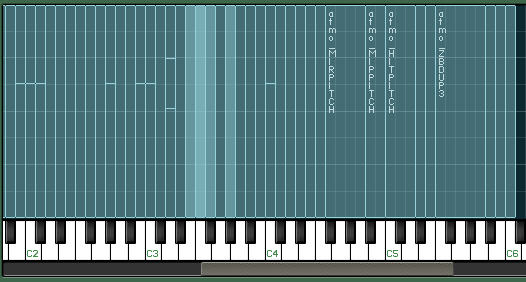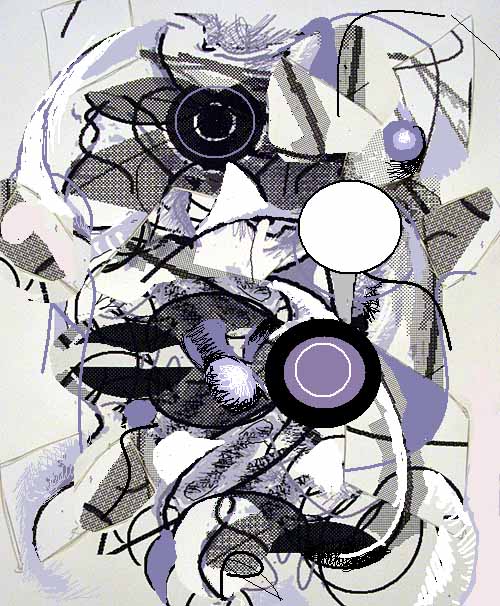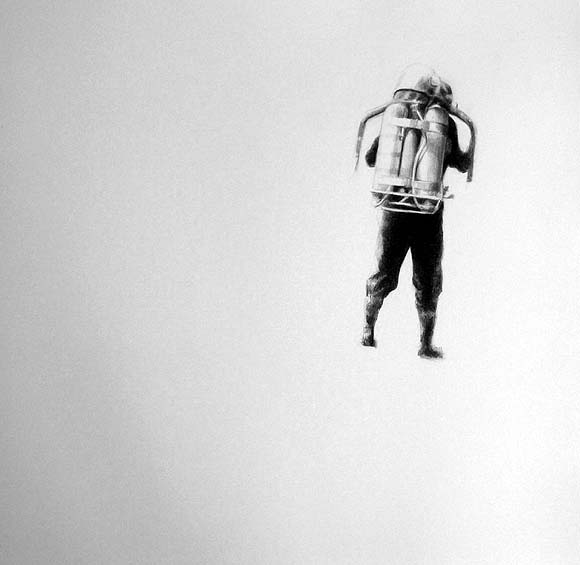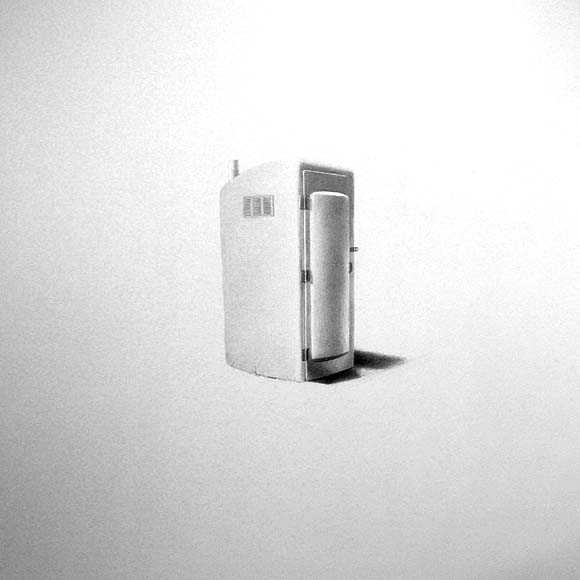View current page
...more recent posts

"Green March" [mp3 removed]. Dear J(ake) M(andell), thanks for the "green algae" drum samples you made for Native Instruments, and for throwing in a few tones that could be used for melodies. The samples are fuller and more ominous-sounding without all the volume-shaping that attaches to them in certain instruments (Battery), which is why I played them "straight" in Kontakt, but either way, brilliant work, you are inspiring people (me) to use the kit just to hear all the things it can do.
"Piano Bar" [mp3 removed]. Tickling the ivories with some slightly grunged-out Rhodes sounds. This one just sort of popped out (the best ones usually do)--most of the melody lines were placeholders for the real tunes and sounded good enough not to change.

Werner Herzog's Grizzly Man, opening in movie theatres tomorrow, sounds creepy-fascinating. Herzog acquired the footage of a would-be documentarian of giant Alaskan grizzlies, and framed it with Herzogian narration and editing. From Village Voice writer Michael Atkinson's description, the bear guy sounds like a cross between Jane Goodall and the football-throwing damaged specimen in Napoleon Dynamite. Atkinson says the film awkwardly captures the essential contradictions between the naively nature-loving filmmaker, eventually killed by the bears he filmed, and Herzog, who as anyone who has heard his monologue about the jungle in Burden of Dreams knows, sees the natural world as an arena of grinding implacable forces. The footage included audio of the bear-lover and his girlfriend being killed, but the audience is mercifully spared it--other than to watch Herzog listening to it and then ordering an assistant to destroy it. I can already visualize that scene; not to take anything away from the tragedy, but Herzog is so serious he cracks me up, as he says, "against my better judgment."
More from my essay on Kara Hammond, completed and sent off this week to the gallery where she is showing: "The understated subject matter, willfully provisional style, and a whiff of mid 20th Century 'populuxe' kitsch all work in concert. When it comes down to it, putting a jetpack--a personal 'rocket belt' built but never mass produced in the ‘60s--in the same show with a Johnny-on-the-Spot, still the state of the art in portable evacuation, is just funny."


Museum to Show Artist's Fingernail Scrapings
Gordon Matta-Clark, the conceptualist and Late Land artist famous for revealing buildings' inner structures by chainsawsing big cuts in them, is good but overfetishized. Because he died at age 35 there's just not that much work--many weak scraps have been shown. The estate is still being picked over, first for real work and now for unfinished projects that can be "completed" and ultimately commodified. As Sarah Hromack and others have reported, the latest exercise in enshrining the bone chip of a saint is the "completion" of Fake Estates, a work deep in the research hopper while Matta-Clark still lived.
Matta-Clark was acquiring slivers of land around NYC "sliced from the city grid through anomalies in surveying, zoning, and public-works expansion." According to the press release
he collected the maps, deeds, and other bureaucratic documentation attached to the slivers; photographed, spoke, and wrote about them; and considered using them as sites for his unique brand of “anarchitectural” intervention into urban space. Matta-Clark died in 1978 at the age of 35 without realizing his plans for Fake Estates, and ownership of the properties reverted to the city. The archival material that he had assembled went into storage and was not rediscovered until the early 1990s, when it was assembled into exhibitable collages. [smarmy emphasis added]Showing an artist's raw material is bad enough, but the team of curators has assembled a team of artists to...here's that word...respond to Matta-Clark's escheated gutters and planting strips. If you thought after the Terminal 5 debacle we were done with this kind of vague, warmed over site-specificity, well, no way; this trend is forever. "Toland Grinnell will coat his curb in Staten Island entirely in expensive leather..." (Yes, that's made up.) The only thing we can hope is that when Chris Burden dies no one finds any unused bullets in his personal effects.
Having criticized Donald Kuspit's essay on digital art for metaphorical overreach and bad choices of work to champion, let's offer a few words of defense. Kuspit's supposedly dense artspeak can't be blamed for Damien Hirst's cut-up cows, a connection one commenter attempts to make. Kuspit believes in nothing if not the natural and the vital over cheeky sensationalism, which, again, Hirst practices only in part. Aligning Kuspit and Hirst is like saying "Greenberg, in his defense of Mary Kelly..." Compared to say, Derrida's writing, Kuspit's language cribbed from psychoanalyis isn't that dense. It's just wordy.
More vexing is current Eyebeam reBlogger Sarah Cook's tarring of Kuspit as a supporter of form over content. ("Seurat's pointilism makes him the first digital artist? An art critic caught up on form yet again. --sarah") Check out what Kuspit says about Seurat, though:
Seurat was the first artist to understand that vibrating sensations are structured in themselves as well as details in a visual structure. [That sounds tautological but we're coming in mid-argument.] To be a really modern artist, a scientific artist, meant to make these structures -- the hidden code of color, as it were -- visible. The more visible the coded matrix of sensations became, the more hallucinatory the representation seems, which is what happens in La Grande Jatte. Indeed, the more structured the vividness of the sensations seemed, the more the picture was totalized as an eternal pattern of vibrating sensations, the more ghost-like the objects represented seemed.If this is formalism, let's have more of it! Sounds like good drugs, to me. The problem with Kuspit's essay is he has found no modern equivalent artist worthy of waxing this eloquent about. That kind of rush, at least for now, can mainly be found in cinematic credit sequences, electronic music made in the likes of Reaktor, and some of the braincrunching Flash videos available for the downloading out there on the Internerd, to use a Gothamist term. Artists will catch up with these pioneering digital works eventually.
La Grande Jatte brings representation into greater question than [Manet's] Music in the Tuileries Gardens. Seurat’s pulverization of representation into a matrix, systematically organized, suggests that doubt and suspicion of representation are built into La Grande Jatte. Perspective continues to buttress the scene, like a backbone, but the perspective is beginning to buckle and flatten -- collapse -- under the enormous weight of the pulsing sensations. Seurat’s painting is a catastrophe in the making, a virtual apocalypse, indeed, the first picture that explicitly presents itself as a virtual reality, and that "argues" that reality is always virtual -- never really real, or, if one wants, it argues that the virtual is the really real. His figures are full-fledged phantoms, delicate, thin gossamers, no longer clumsy, thick patches.
Looking at La Grande Jatte, we are witnessing the death of the order of objects and the birth of the matrix of sensations as a unified field.
--reposted with minor edits, which means the URL changed, whoops.
Digital art duo MTAA link to a Donald Kuspit article that makes some over the top claims for digital work. I haven't studied the essay in depth but agree with about half the premise ("digital art is the new art; code is the new subject") and practically none of the examples. Now MTAA is duking it out in their comments with an anonymous meanie who makes the obvious argument that art has to have that undefinable something regardless of the medium and then backs it up with ad hominem attacks on MTAA's twhid. Guys, don't give that fellow too much of your brain power. (Like I follow that advice with rude anonymous commenters.) More on the Kuspit soon--it's surprising he wrote this because he's usually the spokesman for the Healing Power of Art and fecund interiority over bloodless conceptualism. Possibly he's in full contrarian mode but then his principles are never rock-solid.
Update: The Kuspit piece is disappointing. He bases his link between early Modernist painting and the computer on squishy metaphors of pixeled space that leap across several decades and don't take into account photographic grain, TV rasterizing and other developments that came between Seurat and the first computer art in the 60s. "Code" is also used in a broad metaphorical sense so it could mean almost any systematic approach to art. The only current digital work he discusses in depth is Michael Somoroff's video Query (2004), which is more of that damn art about art, riffing on Duchamp's and Richter's famous nudes descending staircases by subjecting them to the inevitable high-tech imaging analysis. Ugh.
